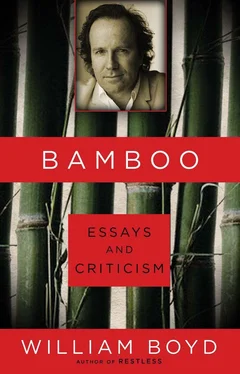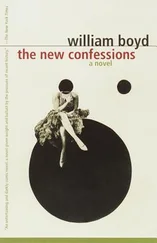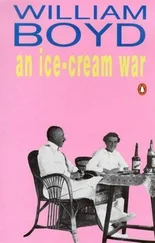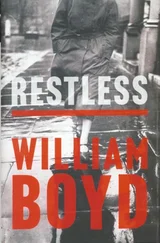G. Grigorovitch
In 1886 Dmitri Grigorovitch, a distinguished Russian writer, wrote Chekhov a letter which changed his artistic life. Up until that date Chekhov had earned his living as a composer of humorous short stories, almost like variety sketches (he was a qualified doctor but it was his writing that sustained him financially). He published these jeux d’esprit under a pseudonym, “Antosha Chekhonte.” The vast majority of them have not aged well: arch, knowing, manifestly trying to be funny, these stories were hack work. Then in 1886 he published a story, “Requiem,” under his own name. Grigorovitch was hugely impressed, and wrote to Chekhov acclaiming his talent and urging him to abandon his comic squibs. “Stop doing hack work… better go hungry… save up your impressions for work that has been pondered, polished, written at several sittings.” Chekhov was overwhelmed by this letter and his reply is valuable if only because it is perhaps the only time that Chekhov drops his guard and gushes. “Your letter struck me like lightning. I almost burst into tears, I was profoundly moved and I now feel it has left a deep trace in my soul.” Grigorovitch’s passionate urging worked. For Chekhov it was a Damascene moment. The eighteen years remaining to him bear witness to his new zeal as a serious artist.
H. Home
Chekhov was born in 1860 in the Crimea, in a town called Taganrog, far to the south of Moscow on the Sea of Azov. More Levantine than European (Turkey was 300 miles away), Taganrog was a hot, fly-infested port with a varied population — Russians, Greeks, Armenians, Italians. Chekhov’s father was an indigent grocer whose debts eventually caused the family to flee to Moscow. Chekhov had four brothers and one sister — Aleksandr, Kolia, Vania, Misha and Masha. Very early in his life Chekhov became the family breadwinner. He supported them all — doggedly and in the main ungrudgingly — until his death.
I. Intimacy
In his short life Chekhov had many lovers but he had, as we would now term it, a real problem with commitment. Most of the women he had affairs with would have been happy to marry him but Chekhov was always careful to keep them at a distance, to break the relationship off if it seemed likely to become too heated.
J. The Japanese Girl
On his voyage back through the orient from his travels to Siberia Chekhov went to a brothel in Hong Kong. He wrote to a friend, “The Japanese girl… doesn’t put on airs, or go coy, like a Russian woman. And all the time she is laughing and making lots of tsu noises… When you come, the Japanese girl pulls with her teeth a sheet of cotton wool from her sleeve, catches you by the ‘boy,’ gives you a massage and the cotton wool tickles your belly. All this is done with coquetry, laughing, singing and saying tsu.”
K. Koumiss
A fermented mare’s milk that was believed, in the 1890s, to be a defence against tuberculosis, as a source of “good” bacilli. In 1901 Chekhov undertook a koumiss cure, drinking four bottles of the milk daily. He gained twelve pounds in weight in a fortnight. A month later he was still coughing blood.
L. Lika Mizinova
The one true love of Chekhov’s life? Chekhov married the actress Olga Knipper in 1901 when he had three years left to live. It was a union that dumbfounded and outraged most of his family — it seemed incomprehensible. It has subsequently been presented as one of the great romances of the twentieth century. My own theory is that his long affair with Lika Mizinova was the real love story. He met Lika in 1889, she was a teacher, an aspiring opera singer, blonde and buxom and nineteen years old. Chekhov was ten years older. For almost a decade they conducted a bantering, passionate on-off love affair. No other woman in Chekhov’s life held his affections so long but he always refrained from proposing marriage. Frustrated, Lika had an affair with Chekhov’s close friend and business manager Ignati Potapenko (a married man). They had a child together. Betrayal enough to break up any relationship, one would have thought — but Chekhov kept seeing Lika. Her career failed, she grew plump but something kept drawing him back to her. They last met in 1897 but Lika remained very friendly with Chekhov’s brothers and sister. She is often considered to be the model for Nina in The Seagull.
M. “My Life”
This is the longest story Chekhov wrote, it’s almost a novella and is, in my opinion, his greatest. In it you will find all the key Chekhovian tropes: the black humour, the candid depiction of the absurdity of life, its fleeting happiness, its “weirdness and vulgarity” (as Stanislavsky put it), its brutal randomness. This dark Chekhovian comic ruthlessness found its way into English literature via William Gerhardie. Katherine Mansfield plagiarized Chekhov but she responded to his more elegiac tone. Gerhardie sensed Chekhov’s tough realism, his acknowledgement of life’s bland cruelty. Gerhardie in turn was a huge influence on Evelyn Waugh (Waugh’s early comedies are extremely Gerhardian, a fact that Waugh himself acknowledged later in life). This tone of voice has subsequently come to seem very English, but it was there in Chekhov first. My other favourite Chekhov stories in no particular order are: “The Lady with the Dog,” “In the Ravine,” “A Visit to Friends,” “Ionych,” “The Bishop,” “The House with the Mezzanine,” “Three Years.”
N. Nice
Chekhov went to Nice in 1898 to protect his damaged lungs from the ravages of the Russian winter. It’s a city I know well, I spent most of a year there in 1971. Like Biarritz, Nice is a place where, here and there, the ghost of Chekhov haunts its streets. At the turn of the century it was popular with Russians and Chekhov stayed in a Russian pension in the rue Gounod. The room I rented was on the rue Dante, a few blocks away. Chekhov liked Nice (the weather was good) and tolerated the routine and circumscribed life he lived there. Nice was a good place to read, he said, but not to write.
O. Olga Knipper
A leading actress at the Moscow Art Theatre. She acted in the earliest productions of Chekhov’s four finished plays— The Seagull, Uncle Vanya, Three Sisters and The Cherry Orchard. Chekhov married her in 1901, three years before he died. Olga survived him by fifty-five years, dying in 1959 (she also survived Hitler and Stalin). She was an ardent keeper of the flame but, despite her efforts to portray it otherwise, there is no disguising that the marriage was a strange one. They spent much more time apart than together (hence their copious and affecting correspondence): she acting in Moscow, Chekhov convalescing in Yalta on the Black Sea. Sometimes she even kept her Moscow address from her husband. She and Chekhov tried to conceive a child but failed. There is strong evidence, however, that she was unfaithful to him and miscarried another lover’s child in 1902.
P. Pavel Egerovitch Chekhov
Chekhov’s father. The son of a serf, he was both absurdly devout and a ruthless disciplinarian. He beat his sons remorselessly. Chekhov saw it as the watershed in his life the day he woke knowing that he would not be beaten by his father. Yet this sentimental, sadistic boor was financially supported loyally and tirelessly by his third son throughout his life, living with him in his various establishments and particularly at Melikhovo, the small estate Chekhov bought to the south of Moscow and which, of all the places he lived in (from 1892 to 1899), he most loved. Pavel Chekhov effectively ran the estate with shrewd serf-like application. He died in 1898, aged seventy-three, on an operating table when the surgeon was attempting to rectify a gangrenous hernia. Pavel had forgotten to put on his truss and developed the fatal hernia by picking up a 20-pound bag of sugar. Chekhov declared it the end of an era, that “the main cog had jumped out of the Melikhovo machine.” He never loved his father but he had never let him down. He abandoned Melikhovo shortly after his father died.
Читать дальше












